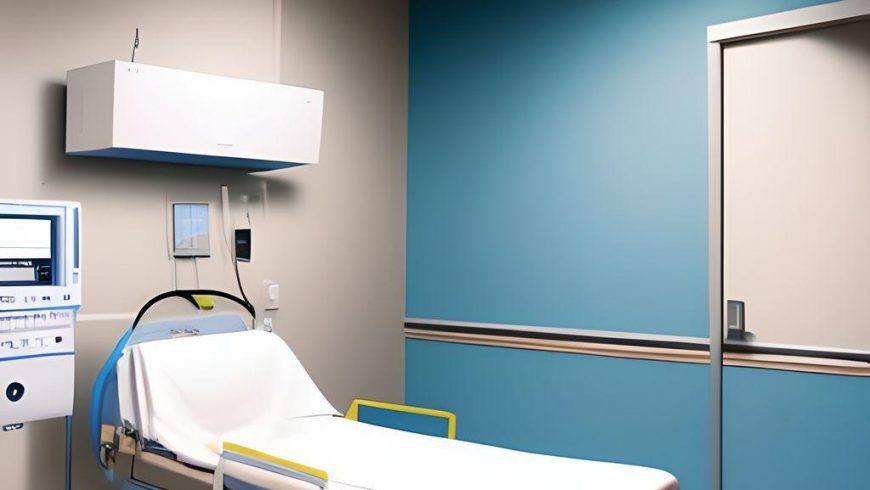Syeda Tamanna Yasmin1* and Surovee Das 1
*1 Research Scholar, Dept. of Microbiology, Assam Don Bosco University, Guwahati, Assam
1Dept. of Nutrition and Dietetics, Martin Luther Christian University, Shillong, Meghalaya
*Corresponding author, Email: syedatamanna60@gmail.com
Abstract: Enteral nutrition (EN) is provided to those patients who are unable to maintain adequate nutritional intake by their mouth. Non-invasive ventilation (NIV) is defined as ‘delivery of ventilatory support via the patient’s upper airway using a mask or similar device.’ So, to receive nutritional support such patients are treated with enteral nutrition. Proper selection of enteral device is dependent on the patients’ gastrointestinal anatomy and function. It is important for dietitian to document the assessment findings, where/how the information was received, and to collaborate and coordinate with the medical teams to develop a safe nutrition care plan.
Keywords: Enteral Nutrition, Non- Invasive Ventilation, Intensive care unit, Critical Care, Mechanical Ventilation, Diet plan, Nutrition.
Introduction
People with hyperglycaemia, electrolyte abnormalities, neurological conditions that impair swallow function, such as stroke, amyotrophic lateral sclerosis, and Parkinson’s disease and infection rates, as well as complications such as parenteral Nutrition (PN) associated liver disease and metabolic bone diseases are more likely to undergo Enteral nutrition. It is also sometimes recommended for individuals with short bowel syndrome (SBS), depending on the amount of bowel resected. According to McNeill and Glossop (2012), non-invasive ventilation (NIV) is defined as ‘delivery of ventilatory support via the patient’s upper airway using a mask or similar device’ and includes both continuous positive airway pressure (CPAP) and non-invasive positive pressure ventilation (NPPV). Initially it was used to treat type II respiratory failure and prevent the need for mechanical ventilation and the attendant complications associated with invasive ventilation but is now emerging as a useful alternative treatment in several clinical situations. Patients with non-invasive ventilation (NIV) are often unable to eat and therefore remain in the fasting state. Non-invasive positive pressure ventilation involves the delivery of oxygen into the lungs via positive pressure without the need for endotracheal intubation. So, to receive nutritional support such patients are treated with enteral nutrition.
Guidelines on enteral nutritional support
Jolliet et al. (1998) provided practical guidelines on various aspects of enteral nutritional support. Protein-calorie malnutrition is one of the major problems in many intensive care (ICU) patients due to the increased catabolic state often associated with acute severe illness and frequent presence of prior chronic wasting conditions. So, nutritional support is an important part of the management of such patients. They mentioned that enteral nutrition (EN) has gained considerable popularity due to its favourable effects on the digestive tract, and its lower cost and rate of complications.
Heyland et al. (1995) recorded the time elapsed from ICU admission to initiation and tolerance of enteral feedings, and examined factors associated with these events. They defined tolerance as receiving 90% of estimated daily energy requirements for more than 48 hours without gastrointestinal dysfunction (i.e., high gastric residuals, vomiting, diarrhoea and abdominal distention). Enteral nutrition is often not started in all eligible ICU patients because approximately half of the patients receiving enteral nutrition achieved tolerance of the regimen. Gastrointestinal dysfunction causing intolerance to enteral nutrition is a common reason for not starting or discontinuing feedings. In patients with acute exacerbation of chronic respiratory failure, the recommended level of protein supply ranges from 1.0 – 1.8 g/kg/day and the use of specific high-fat, and low-carbohydrate formulae are not indicated. Special attention should be paid to supply of potassium, phosphorus, magnesium, and antioxidants. In patients with acute lung injury and acute respiratory distress syndrome, an enteral diet enriched in omega-3 fatty acids and antioxidants is recommended.
Nutritional management of covid patients
In case of patients with Covid-19, if oral intake may not be possible for more than 3 days or expected to be less than 50% of estimated energy requirements for more than 5-7 days, some patients may need additional respiratory support in the form of Non-Invasive Ventilation (NIV) or Continuous Positive Airway Pressure (CPAP) (Barazzoni et al., 2020). If the patient is unable to maintain volitional oral intake, early EN is recommended by both 2016 SCCM/ASPEN and 2019 ESPEN guidelines. (McClave et al., 2016; Singer et al., 2019). Like most ICU patients, COVID-19 patients are expected to tolerate EN and benefit from the favourable physiologic response to bathing the intestinal mucosa with luminal nutrients (Martindale et al., 2020).
Nutritional therapy in patients in ventilation
Mariko Kogo et al. (2015) found that early nutrition appears to be effective for acute respiratory failure, but for non-invasive ventilation (NIV), airway problems such as mucus plug and vomiting could be serious complications. Still the safety of early enteral nutrition among patients receiving non-invasive ventilation is not well-known. In their study, they compared the patients with and without enteral nutrition and investigated the clinical background and complications. It was observed that 70% of the patients incapable of eating themselves, who received NIV, had enteral nutrition. Patients with normal partial pressure of arterial carbon dioxide (PaCO2) level and low albumin level tend to receive enteral nutrition. The patients with enteral nutrition had a significantly higher rate of airway problems and longer NIV days. There was no relationship between enteral nutrition and in-hospital mortality.
The recent enteral nutrition guideline by the American Society for Parenteral and Enteral Nutrition no longer recommends using gastric residual volume as a routine care criterion for withholding enteral nutrition inappropriately. However, there is a trial suggesting an association between vomiting and a gastric residual volume of 250 ml (Reignier et al., 2013).
Selection of the proper enteral access device
Proper selection of the enteral device is dependent on the patients’ gastrointestinal anatomy and function. Among all, the naso-enteric tube is the most commonly used method of enteral access, and it can be inserted into the stomach, duodenum or jejunum. Tubes placed past the third portion of the duodenum, and especially past the ligament of Treitz, are associated with a decreased risk of aspiration. Instead of large-bore nasogastric tubes, small bore feeding tubes made from polyurethane or silicone, in sizes from 6 F to 12 F, are more suitable since they are associated with greater tolerance and comfort. Correct tube placement is confirmed by air insufflation and auscultation, aspiration of gastric and small bowel contents and by X-ray. Tube enterostomies (gastrostomy or jejunostomy) are used for long term enteral nutrition and when obstruction makes nasal intubation impossible, gastrostomy is the most common method for long term access. The insertion of gastric tubes can be performed non-surgically such as by percutaneous endoscopic gastrostomy (PEG) or fluoroscopic guidance or surgically.
Safe Practices for Enteral Nutrition
Boullata et al. (2017) recommended that there should be goals set for enteral nutrition; first, there is a need to evaluate the indication for EN. Then additional objectives of the assessment are to estimate macronutrient, fluid, and micronutrient needs, and to determine the most appropriate formula and route of administration, identify barriers to tolerance; prevent or ameliorate potential adverse events, including GI intolerance, and metabolic and/or fluid disturbances. For all these objectives, a thorough understanding of the patient’s overall condition is required.
It is important for dietitian to document the assessment findings, where/how the information was received, and to collaborate and coordinate with the medical teams to develop a safe nutrition care plan. Patients should be monitored by daily physical examination and confirmation of passage of stool and gas. These observations should be “clustered” with other provider activities to minimize healthcare team virus exposure and proper proceedings (Reignier et al., 2013).
REFERENCES:
Barazzoni, R., Bischoff, S. C., Breda, J., Wickramasinghe, K., Krznaric, Z., Nitzan, D., Pirlich, M., Singer, P., & endorsed by the ESPEN Council (2020). ESPEN expert statements and practical guidance for nutritional management of individuals with SARS-CoV-2 infection. Clinical nutrition (Edinburgh, Scotland), 39(6), 1631–1638. https://doi.org/10.1016/j.clnu.2020.03.022
Boullata, Joseph I.; Amy Long Carrera, Lillian Harvey, Arlene A. Escuro, Lauren Hudson, Andrew Mays , Carol McGinnis, Jacqueline J. Wessel,Sarita Bajpai ,Mara Lee Beebe R, Tamara J. Kinn , Mark G. Klang, Linda Lord, Karen Martin, Cecelia Pompeii- Wolfe, Jackie Sullivan, Abby Wood, Ainsley Malone, Peggi Guenter. (2016).Safe Practices for Enteral Nutrition Therapy Task Force. American Society for Parenteral and Enteral Nutrition .https://doi.org/10.1177/0148607116673053
Heyland, D., Cook, D. J., Winder, B., Brylowski, L., Van deMark, H., & Guyatt, G. (1995). Enteral nutrition in the critically ill patient: a prospective survey. Critical care medicine, 23(6), 1055–1060. https://doi.org/10.1097/00003246-199506000-00010.
Jolliet, P., Pichard, C., Biolo, G., Chioléro, R., Grimble, G., Leverve, X., Nitenberg, G., Novak, I., Planas, M., Preiser, J. C., Roth, E., Schols, A. M., & Wernerman, J. (1998). Enteral nutrition in intensive care patients: a practical approach. Working Group on Nutrition and Metabolism, ESICM. European Society of Intensive Care Medicine. Intensive care medicine, 24 (8): 848–859. https://doi.org/10.1007/s001340050677
Mariko Kogo , Kazuma Nagata, Jiro Ito, Yuki Sato, Shunsuke Teraoka, Ryoji Kato, Ryoko Shimizu, Takehiro Otoshi, Daichi Fujimoto, Atsushi Nakagawa (2015). Safety of enteral nutrition in patients with non-invasive ventilation for acute respiratory failure. European Respiratory Journal 46 (supply 59): PA2182. https://DOI:10.1183/13993003.congress-2015.PA2182.
Martindale, R., Patel, J. J., Taylor, B., Arabi, Y. M., Warren, M., & McClave, S. A. (2020). Nutrition Therapy in Critically Ill Patients with Coronavirus Disease 2019. JPEN. Journal of parenteral and enteral nutrition, 44 (7), 1174–1184. https://doi.org/10.1002/jpen.1930
McClave, S. A., Taylor, B. E., Martindale, R. G., Warren, M. M., Johnson, D. R., Braunschweig, C., McCarthy, M. S., Davanos, E., Rice, T. W., Cresci, G. A., Gervasio, J. M., Sacks, G. S., Roberts, P. R., Compher, C., Society of Critical Care Medicine, & American Society for Parenteral and Enteral Nutrition (2016). Guidelines for the Provision and Assessment of Nutrition Support Therapy in the Adult Critically Ill Patient: Society of Critical Care Medicine (SCCM) and American Society for Parenteral and Enteral Nutrition (A.S.P.E.N.). JPEN. Journal of parenteral and enteral nutrition, 40(2), 159–211. https://doi.org/10.1177/0148607115621863
McNeill, GBS and Glossop, AJ (2012). Clinical applications of non-invasive ventilation in critical care, Continuing Education in Anaesthesia Critical Care & Pain, Pages 33–37, https://doi.org/10.1093/bjaceaccp/mkr047
Reignier, J., Mercier, E., Le Gouge, A., Boulain, T., Desachy, A., Bellec, F., Clavel, M., Frat, J. P., Plantefeve, G., Quenot, J. P., Lascarrou, J. B., & Clinical Research in Intensive Care and Sepsis (CRICS) Group (2013). Effect of not monitoring residual gastric volume on risk of ventilator-associated pneumonia in adults receiving mechanical ventilation and early enteral feeding: a randomized controlled trial. JAMA, 309(3), 249–256. https://doi.org/10.1001/jama.2012.196377
Singer, P., Blaser, A. R., Berger, M. M., Alhazzani, W., Calder, P. C., Casaer, M. P., Hiesmayr, M., Mayer, K., Montejo, J. C., Pichard, C., Preiser, J. C., van Zanten, A. R. H., Oczkowski, S., Szczeklik, W., & Bischoff, S. C. (2019). ESPEN guideline on clinical nutrition in the intensive care unit. Clinical nutrition (Edinburgh, Scotland), 38(1), 48–79. https://doi.org/10.1016/j.clnu.2018.08.037




